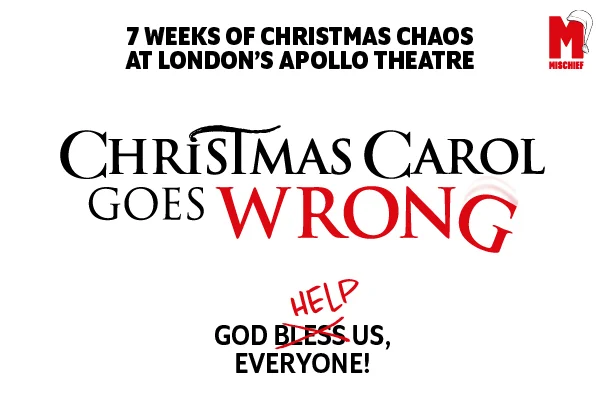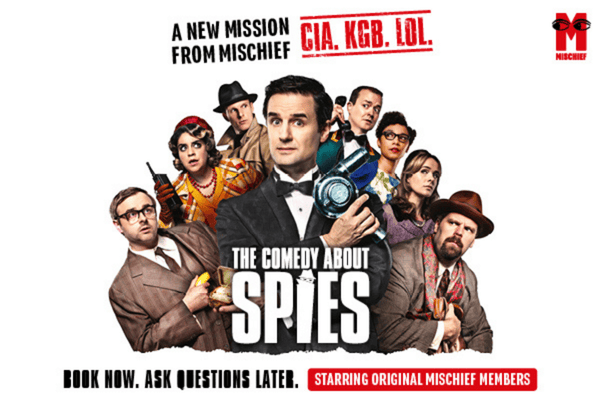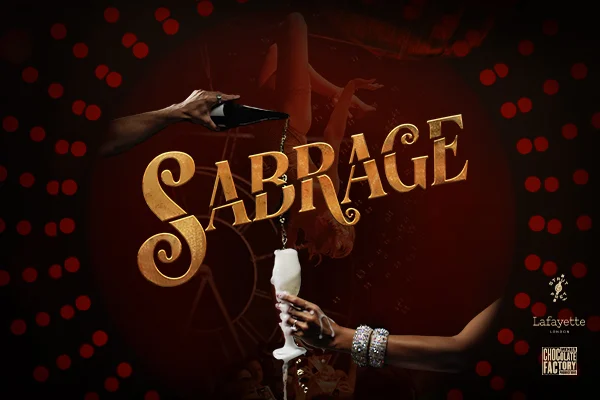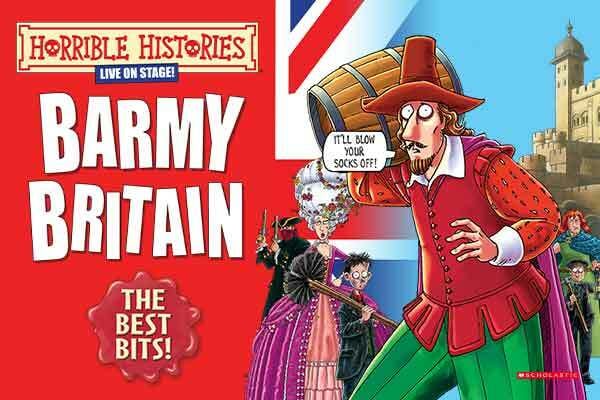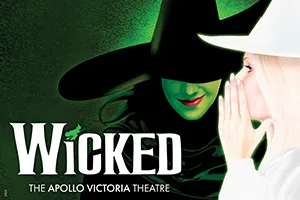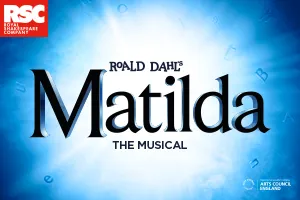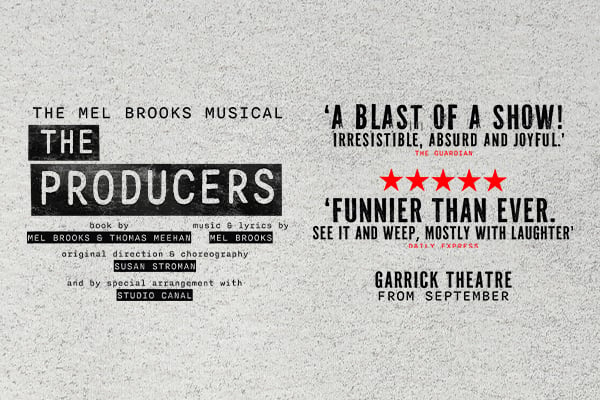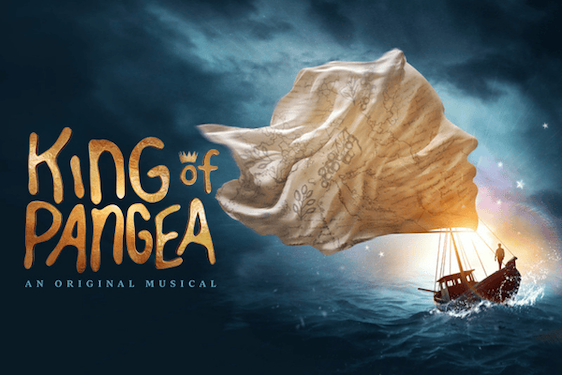Background
The city itself is magical regardless of the Fringe.
Francesca Moody first found success at the Edinburgh Festival Fringe, producing the wildly successful Fleabag, starring Phoebe Waller-Bridge. From there, she launched her own production company, winning an Olivier Award for her work on Richard Gadd's Baby Reindeer. Francesca is also the recipient of eight Fringe First Awards and three Off West End Awards. Alongside Phoebe Waller-Bridge and Olivia Colman, Francesca helped establish the Theatre Community Fund, which raised £1 million for artists whose careers and futures have been affected by the Covid-19 pandemic. In 2020, in association with the Soho Theatre and the Traverse Theatre, she co-created the Shedinburgh Festival Fringe, which is back for its second year.
Francesca Moody! How are you doing?
I’m doing alright! It’s really great to be at the Fringe. I tweeted recently that I was on my annual pilgrimage to my spiritual home! I’ve been coming since I was 17 so I’m glad I’m here. My body is used to working really hard around this time of year, so in a weird way, the hard work feels good! It’s hectic, but it’s so wonderful to be doing Shedinburgh for a second year.
So, what makes Edinburgh itself so special to you?
The city itself is magical regardless of the Fringe. I think it’s a beautiful city. I’m from London and it’s impossible to get from one side of London to the other without getting on a tube or, in my case, riding my bike. But here, you can really soak in the city because you can move by foot. I did my first Fringe in 2005, I’ve done every year since and started producing shows in 2010 so I’ve spent more than a year of my life in this city. It’s where I’ve made some of my best friends and it’s where I’ve made some of my favourite memories. It’s almost like the school term, it feels strange if you don’t come here because you sort of gear yourself up for it. I was here last year for Shedinburgh, so I got to see the city without the hubbub of the festival and it was a strange experience! Even just to walk around the city and to experience somebody giving you a flyer, someone singing a song on the street or just seeing people spilling out of shows and chatting, you couldn’t get that last year. The festival itself is this amazing, magical thing and I’m so happy that it’s back this year.
Shedinburgh is back for its second year. For those of us who don’t know, can you just explain what Shedinburgh is?
Shedinburgh is an online, streamed arts festival of, what we’re now calling, the 'greatest hits' of the Fringe. It’s a mixed program of theatre, comedy and music. Often with the theatre stuff it’s 'shed-based' versions of Fringe favourite shows. With the comedy stuff, it’s more artists who have come up through the Fringe or are coming up through the Fringe and bringing their work to the shed. The work could be new, old or something they want to try out and then a few other new artists bringing completely new work. It’s all performed from two sheds: one built on the stage at the Soho Theatre in London and one up here at the Traverse and then streamed out globally across the world. It was all formed from my very good friend, writer and performer Gary McNair last year saying to me not to worry about the Edinburgh Festival Fringe being cancelled: “I’ve got my shed and I’m going to do my own Shedinburgh Fringe!” I thought it seemed like an interesting idea and maybe we could do something with that.
Did you see Shedinburgh as an event continuing past 2020, or just as a temporary fix for last year?
I think initially it was a temporary fix. For me I hadn’t really had anything to produce for so long. There’s this phrase that 'producers need to produce';that we need to make things and do tangible things. So it was partly that and partly Gary and me and of course Harriet [Bolwell] our co-director. The festival has been so kind to us over the years and, in my case, it’s the foundation for my entire career as a producer, so we wanted to celebrate it. But then as we were doing Shedinburgh, we actually realised that it’s really fun, a great way to platform artists and a great way to democratise work. It makes it more accessible since there are so many people who you realise haven’t been able to attend the Fringe because of financial restrictions, geographical restrictions and disability. For all of those reasons, we were thinking about how we can do it in 2021, whether that’s digital or live and I suppose at the end of Shedinburgh last year, we didn’t quite know what form that would take. I guess the hope was that we would maybe do it as a live and a digital venue. As the year went on and there was still so much uncertainty, we realised that we could definitely do something digital and I suppose that’s why we committed to it. The genesis of the idea was us responding to the pandemic. But as the whole thing went on, it became clear to us that actually it was a really cool, clever idea and the artists were having a great time and we were having a great time. Also the one thing I didn’t mention about Shedinburgh, of course, is we raise money for our “Shed Load of Future” fund to help artists get to the Fringe in the future and we wanted to carry on raising money for that fund. That pot of money that we raised last year, which was just over £20,000, is great. We decided not to give it out this year because we wanted to make a meaningful impact and we didn’t know what the Fringe was going to look like this year. We wanted to honour what we said the fund was going to do which was really help the next generation make it at the Fringe. Whilst this year is really magical because it’s back, the 2021 Fringe is about artists getting their work back on and getting audiences to see it. It’s not about the marketplace or the other things that make the Fringe really great to have on our doorstep here in the UK. So, I think we have the opportunity to bolster that fund in the hope of giving it out next year.
This year, Shedinburgh has secured some fabulous acts. What’s the initial reaction from people when you tell them that they’ll be performing in a shed studio space?
I always try and jump in before they have a chance to react, is the truth! I think initially they find it quite funny because, if you lead with Shedinburgh, it’s a pun and they find that quite funny. I think what I always try and do is give them a bit of context, so I try and say a few things like “doing a show in Shedinburgh is like doing an acoustic gig”. It’s like the raw version of your show. It’s also a challenge for you as an artist. Some acts can turn up to the Fringe and their venue is a drippy cave in the Cowgate with outside noise coming in, or a room in a back pub that just has a curtain across the back of the stage with a tech guy who doesn’t know how to turn on the soundboard. I think what’s so magical about the Fringe is so many people are able to create the magic of whatever show it is they’re making, whether that’s theatre, comedy or music with all of those restrictions. So, I say that we’re trying to emulate the Fringe in that way. It’s a bit of a challenge for them to come and do it like that. Not all artists say yes when asked to do Shedinburgh, and I think that’s totally fine, because not every show works in Shedinburgh if I’m honest. When it comes to theatre, it has to be an artist who’s prepared to let go of all of those elements that sit around a show. We don’t offer any extra lighting; we do offer sound but it’s kind of limited and you are restricted to performing within the shed space. But a lot of people really like the idea of taking on that challenge and also the ‘pay it forward’ aspect of Shedinburgh, particularly the bigger artists. Even those less famous but ‘Fringe famous’ artists, they love the idea of being part of something that can support the next generation.
Have you found that artists discover things about their show that they hadn’t realised after performing in the shed?
Anecdotally, I think acts have really enjoyed the challenge and the experience of stripping back their shows and often have surprised themselves by realising that they don’t necessarily need all that, or that they can challenge their shows to be stripped back. There’s something really nice about that. I think the other thing is how do you learn that language of camerawork, especially with theatre where there’s a specific camera you could look at if you want to make a real impact. I think it’s useful for these acts because as we move forward in these times where we’re coming back into more live stuff again, the digital stuff is still going to be here. I think live artists in general are learning how to be more comfortable in front of cameras.
During lockdown, I attended one of your online intensive courses about the Edinburgh Fringe and you spoke about the importance of networking with other acts and producers. With networking, do you prefer meeting face-to-face or screen-to-screen?
I think doing it face-to-face is better. We’re really lucky that we’re living through a time where technology can facilitate networking opportunities, but you absolutely can’t beat a face-to-face meeting because it’s so much easier to communicate – we can gesticulate and we’re not reliant on internet connection and that sort of stuff. The internet and the digital world for networking is amazing. In terms of Shedinburgh, I’m meeting loads of artists whose work I’ve admired and who I’ve maybe wanted to work with. It’s a great networking opportunity for them and for me, meeting each other and actually seeing them perform but also engaging with them.
Shedinburgh has been revolutionary over the past two years because not only does it attract some great names and shows, I think it gives audiences a feeling of hope for festivals to continue in the future. Do you think live and online shows can sit together for the future?
I definitely think they can sit together for the future. I think as an industry we’re learning how that works. The challenge for us with Shedinburgh has been working out how to make something feel live because ultimately that is the distinction between the digital and the live experience – you’re in the room and you’re not in the room. I think we have to learn how to do it better and harness it because, again, it massively democratises the work. But not only does it do that, it platforms artists and gives them an opportunity to make money in a different way, which I think is really important. We’re never going to let go of the live experience. In my opinion, I don’t think digital is ever going to overtake the live experience in the context of our industry. But we should be striving to have them exist alongside each other and I think they can exist alongside each other. We just have to be clever in the way we do things and I think Shedinburgh is an example of that and some of the other really interesting digital shows that are happening at the Fringe that are more interactive, they’re another example of innovation. As long as digital can find ways of finding that sense of live-ness then I think it just opens up opportunities for artists and audiences to just experience culture and monetise work at the same time which is only a good thing for the long-time sustainability of the sector.
One thing that I noticed myself in general as I went back into watching live theatre again is that I’ve had the opportunity to analyse what it is about going to the theatre that I really love. I would have quite a clinical experience: I wasn’t allowed to meet a friend at the bar before, I was scanning in on my phone, I was wearing a mask. It made me realise that the live experience of going to the theatre or a comedy show is that it’s a lot more than just the show. It about the excitement before, it’s about meeting your friends and about going there and feeling other people in the room with you. I think distancing in theatres is something that we’ve needed to do and still need to do to make audiences feel safe. At some point, we will be sitting shoulder to shoulder again and that’s exciting to me because you feel like you have permission to do things like laugh and make noise again as we always have. So, I genuinely don’t think that we will lose live experiences because humans need to be around other humans whether they know them or not and experience a night out. We won’t want to let go of that.
Who are some dream names you’d love to perform in Shedinburgh 2022?
You’re putting me on the spot here! I would love Selina Thompson to do something. I just think she’s the most amazing artist. I would love Stephen Fry to do something. I think probably Eddie Izzard because he came up through the Fringe. I’m desperate to have Bryony Kimmings as well! Lastly, Daniel Kitson because I think his work is perfect for the shed.
Finally, what’s been your favourite show you’ve seen at this year’s Fringe?
Can I pick two? I saw Medicine at the Traverse. It just blew me away. I love Enda Walsh’s writing. I also saw a show called Mediocre White Male at Assembly Roxy and I thought it was really great. In fact, we’ve just programmed it in Shedinburgh. It was just a really brilliant, clever, funny, well-performed one-man show.
Donations can be made directly into the SHED LOAD OF FUTURE FUND: https://shedinburgh.com/donate/










